Wh

New-age buyers-the kind who maybe started flying when Bill Clinton was still in the White House-arent so sanguine. If they drive a BMW or a Lexus, they actually expect things like competent customer service and airplanes that more or less perform as the manufacturers claim. But have the manufacturers sensed this and adjusted their marketing and sales hype accordingly? Mostly, they have, but they still try to slip by a fast one occasionally, which is what Colombia and Mooney are doing at the moment, in our view. In their sales material and Web sites, both are claiming to sell the fastest piston single-Columbia with its 400 and Mooney with its recently introduced Acclaim. Says Columbia on its Web site: “The Columbia 400 is faster than any other certified single-engine piston-powered aircraft on the planet, period.”
Like all such ad claims, these seem to have materialized out of the thin air the 400 and the Acclaim need to climb into to deliver the speed theyre selling. There’s no FAI certification, no Guinness Book of World Records certificate and not even so much as an asterisk explaining the details.
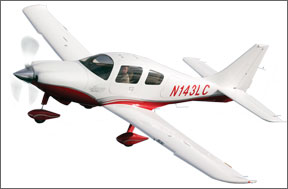
But with two companies hanging the same claim out there like a ripe plum, we decided to pluck it. Just as there can be only one first, so can there be only one fastest. One company must therefore be righteous, while the other is sucking wind or at least spent hydrocarbons from a competitors exhaust. While were at this comparison, we’ll shed some light on what we think are questionable technical claims by both companies that we believe educated buyers should know about.
200 Plus
Were not sure how seriously buyers take the fastest-piston-single claim, but several have told us theyve paid attention to it, if just for bragging rights. Were certain of one thing, however: High-flying, fast-cruising 200-knot turbocharged airplanes dominate the market.
Every manufacturer who sells a significant number of high-performance singles and which offers a choice of both turbocharged and normally aspirated models sells more turbos, sometimes by a margin of three to one or more. (Exception: The Cessna 182, whose turbo version sells about equally with the non-turbod version.)
The top seller among the turbod go-fast cruisers isn’t even the fastest-its the Cirrus SR22 G3 Turbo. By our estimation, Cirrus will sell more of that model in 2007 than Mooney and Columbia will sell of all airplanes. Cirrus cant really push the speed card for the G3 Turbo, leading us to wonder if the Cirrus whole-plane parachute idea is a bigger sales driver than raw speed.
All three of these airplanes use some variant of Continentals IO-550, a successful powerplant that has given TCM a significant market lead over Lycoming in the high-performance segment. But each company has approached the need for speed from this engine from a different angle.
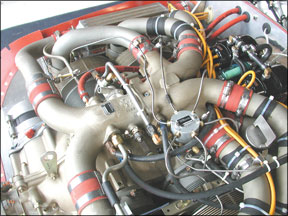
Cirrus simply bought a turbonormalized design for the IO-550-N from Tornado Alley Turbo, which developed the design on its own for the potential STC market. In the SR22 Turbo, the 550 delivers 310 HP. Columbia and Mooney developed their own turbo systems, in conjunction with Continental, which openly abhors turbonormalizing. Like the SR22, the Columbias variant (TSIO-550-C) delivers 310 HP, but the Mooney version (TSIO-550-G) is de-rated by RPM, limiting it to 280 HP.
But a funny thing happened on the way to the type certificate, or, more accurately, the sales brochure. Mooney touts the Acclaims TSIO-550-G as being turbonormalized, but it really isn’t, at least by our definition. It ground boosts above sea-level manifold pressure but, more important, it has the low-compression pistons manufacturers have typically used in turbocharged engines as a hedge against detonation.
The difference is slight. The higher compression pistons deliver better thermal efficiency because of a higher gas expansion ratio. That might not play out in extra practical range for the airplane, but neither is it accurate to consider both the Cirrus and Mooney to be turbonormalized. Dialing down the boost does not turbonormalization make.
In our view, Mooney adopted this sleight of hand for one simple reason: marketing. Like everyone else, it (and Continental) sees how we’ll buyers have resonated with Tornado Alleys turbonormized systems and it only makes sense to jump on the bandwagon with its own turbonormalized offering, even if it means
appearing to go against the grain with Continental.Columbia has attempted to counter the turbonormalizng challenge with what we think is carefully considered obfuscation. On its Web site, it has published what it calls a series of white papers intended to educate buyers on the technicalities of aircraft performance. In whats clearly a swipe at Cirrus and Tornado Alley Turbo, which provides the turbonormalizing system for Cirrus under a turnkey STC, heres what Columbia says in its white paper on induction systems: “STC modifications do not undergo the same level of rigorous development and proof of design by the OEM, they are developed in the aftermarket-hence the term supplemental. In fact, in most cases, making modifications to an engine or airframe, even an STC

approved modification, will void the OEM warranty since the modifications will inherently alter the design parameters of the engine and may allow the pilot to exceed the certified and demonstrated safe limits of the engine or airframe.”
The white paper continues with this claim: “Turbonormalizing…was abandoned by engine OEMs over 50 years ago in favor of the safer, more reliable turbo-charging method.” In Columbias view, the demon the engine OEMs were alluding to is detonation, which it argues is more likely because turbonormalized systems use high compression pistons.
But there’s a problem with this claim-actually several problems. First, if the detonation worry was valid 50 years ago, it no longer is thanks to improved understanding of induction and especially intercooling and baffling. On this issue, the OEMs appear to be propelled by industrial inertia, not recent research worthy of the name. Second, Cirrus has utterly rejected this argument and so have its customers, which, in part, may explain why Cirrus outsells Mooney and Columbia combined.
Last, Tornado Alley Turbo and Cirrus appear to be out in front of Columbia in the research and education. A few thousand owners have attended the Advanced Pilot Seminars conducted in concert with TAT, during which theyve actually operated a turbonormalized engine through a detonation profile in the test cell and seen the effects of well-designed intercooling and baffling. Whens the last time that happened at Continental or Lycoming? Bottom line: TAT has effectively discredited the detonation argument and a substantial army of owners know it at the grass roots level. Columbias attempt to swat at turbonormalizing with out-of-date technical claims may harm rather than help its cause, in our opinion. (Even some Columbia owners seem more in tune with TATs recent findings than Columbia itself.)
Flight Trials
So, technical claims aside, which of the three airplanes is fastest? To make things easy, the two top contenders are really the Acclaim and the Columbia 400, since theyre the ones claiming the speed crown. Our real world tests, however, reveal that fewer knots separate the Cirrus and Columbia than we originally thought. We don’t think the Cirrus is faster, but the Columbia doesnt exactly leave it for dead, either.
Best case, the Cirrus is still the third place finisher because of its fuel capacity-it has the shortest legs. “Best case” means that if all three airplanes are operated lean of peak-which the majority of owners seem to do-the Mooneys optional 130-gallon tanks make it the undisputed max range leader, followed by the Columbia, then the Cirrus. More on that later, but first the speed trial.
The best way of performing head-to-head speed trials is to fly the airplanes in question as a flight of two, we’ll into the flight levels, if necessary. Thus far,
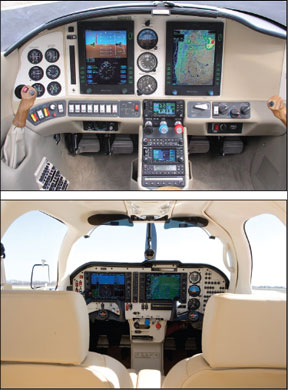
putting two-never mind three-airplanes together with willing companies and pilots has proven elusive, so we did the next best thing. We flew all three airplanes on similar climb and cruise profiles and compared our findings.
We also asked past contributor Brent Silver, an Acclaim owner, for some additional data. For the Columbia data, we flew with owner A.J. Stuper, who bases his 400 at Coatesville, Pennsylvania and Art Schwalge, another 400 owner, provided us with additional data.
While its true that temperature differences and weight affect performance, we think our flight trial is a reasonable and fair attempt at objective comparison. In any case, comparing real world numbers to POH numbers is always illuminating. To fly the profiles, we climbed to various altitudes, leveled out and allowed the engine and airspeed to stabilize for about 10 minutes before collecting data. We used TAS calculations directly from the Garmin G1000 installed in both airplanes.
Lets look at the Mooney first, which we flew in February. The airplane was a stock production model leased back to Mooney by an owner as a demo aircraft. As the chart on page 5 shows, the airplane showed 200-plus knot cruise figures all the way to 20,000 feet, where we topped the climb at ISA +8 degrees for safety reasons. The Acclaims best observed speed was 226 knots, rich of peak and burning 20.3 GPH. Applying the 1.5 knot per thousand airspeed increase rule of thumb, we’ll concede 230-knots plus as possible, but we didnt confirm this. For the power settings we used, the fuel burn proved to be right on the book numbers, but the speed was about 6 knots faster than the POH advertised.
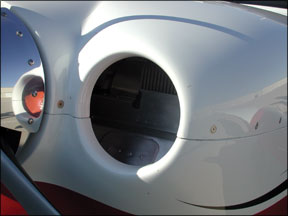
Although the fastest speed we see in the POH is 232 knots at 25,000 feet running 50 degrees rich of peak and about 22 GPH, Mooneys promo material claims a 237-knot “normal” cruise speed. This strikes us as unrealistic. It requires so much fuel at a mandated rich-of-peak-setting that the airplanes range would be uselessly short. Mooneys David Copland says the company doesnt really disagree and is moving away form the term “normal cruise,” although it sticks by the 237 knots as a max speed number.
Based on our interviews of owners, most seem wise to the fact that cruising at FL250 represents a physiological hazard thats not worth the risk. Further, rich of peak, the Acclaim tends toward high CHTs. Acclaim owner Brent Silver sent us some data points showing cruise values between 200 and 207 knots and Silver told us hes not interested in operating his engine at higher power settings to achieve additional speed. Owners may say they want speed, but in the real world, we think they prefer lower power settings because they believe it improves engine longevity.
Columbia Trial
Although both airplanes use the same engine-a ground-boosted TSIO-550-comparing the two has a whiff of apples and oranges. Its type certificate gives the engines maximum output as 350 HP. But in the Columbia, its limited to 310 HP and in the Mooney Acclaim, the engine is further derated to 280 HP by RPM limiting. Further, Mooney and Columbia express leaning requirements differently, which one Columbia owner described as “screwy.”
Mooney recommends 50 degrees rich of peak for best power or 50 degrees lean for best economy and it publishes separate POH tables for each, stratified by altitude. Very clear. Columbia, on the other hand, allows lean of peak operation only at 65
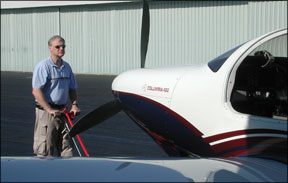
percent power or less-above that, it recommends rich of peak only.
In our opinion, this conservative leaning approach saps the airplanes cruise potential against the Mooney. Further, the Columbia power tables automatically build in the lean option below 65 percent power, which we think is confusing compared to Mooneys approach. And we doubt if 400 owners are following Columbias advice anyway. Owner A.J. Stuper wont fly his 400 rich of peak at all and he ignores the 29-inch MAP limitation Columbia recommends when operating lean of peak.
As the chart on page 5 shows, our flight trial indicated that just as the Mooney beat its POH numbers by a few knots, the Columbia did, too, on the lean side. Since neither of our owners were interested in leaning on the rich side, our data reflects full rich operation or lean-of-peak operation. We compared the lean numbers, since these represent the fairest comparison.
At 20,000 feet, where the book said the 400 should have been truing about 204 knots lean of peak, we observed 211 knots. That compares to 218 knots we saw in the Mooney at the same altitude. At ISA +8, the Mooney enjoyed a slight temperature advantage. Stuper pointed out that his Columbia has air conditioning which might account for its slower speed and Columbia confirms that. But were not
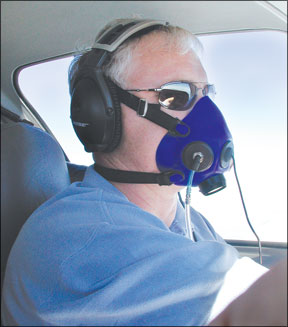
sure we agree. Owner Art Schwalge gave us a nice scatter plot of speeds from his Columbia 400-his airplane isn’t air conditioned but has de-icing-and his speed and fuel flow data agreed with our findings from Stupers airplane more precisely than we could have imagined. Schwalge believes the de-icing cost him 5 to 7 knots.
Payload, Range
Another important aspect of performance is payload and range. Here, the two airplanes are closer than we had thought. The Acclaim demo had a useful load of 957 pounds, the Columbia 981 pounds or 1046 pounds, without air conditioning. Thats about one-half of an FAA standard-issue person. With full fuel, the Mooney will carry about 345 pounds, the Columbia 458 pounds. If both have air conditioning, the Mooney carries 285 pounds while the Columbia can haul 393 pounds. The Mooney, however, suffers an awful payload hit if its equipped with 130-gallon long-range tanks, TKS and air conditioning. If everything is topped up, the Acclaims payload sags to an abysmal 20 pounds.
On the other hand, with the long-range tanks, the Acclaim is the undisputed range king of all the piston singles, easily capable of 1400 miles in still air, with reserves. With standard tanks in both airplanes, the Acclaim still out ranges the Columbia, according to our research, because it carries a little more gas, cruises a little faster and burns a little less, according to our trials.
Conclusion
Conceding that the best right way of doing speed trials is to pit two airplanes against each other in the same airspace-or, better, three examples of each model followed by averaging of the data-we cant fairly call our findings definitive. Nonetheless, we think we can conclude that Columbias claim that the 400 is “faster than any other certified single-engine piston-powered aircraft on the planet, period,” hasnt been entirely borne out. Call us very skeptical.
We have invited both companies to participate in a wing-to-wing flyoff and both have agreed. Mooneys Copland said he couldnt put a date on it, but agrees in principle. He also notes that Mooney has a major announcement planned for AOPA Expo in early October which may affect the Acclaim.
Columbias Randy Bollinger says hes ready for a flyoff; name the place. He also questioned our trial findings, noting the the speeds we obtained seem a bit odd to him. “Columbia shows sustainable power settings at 238 knots without burning up cylinders, our Acclaim manual only shows 231 knots,” says Bollinger. Touch! Let the battle be joined.
Meanwhile, how should a buyer evaluate these two airplanes? First of all, marketing fluff notwithstanding, we think theyre both first-rate airplanes and we wouldnt wave a buyer off either one of them. But if raw speed really floats your boat, we recommend taking a demo ride in each one and duplicating the flight profile we flew. Construct a little spreadsheet and record speeds, temperatures, fuel flows and weights and, as we did, note the airplanes real useful load, not what the factory claims the useful load to be.
For raw speed, our money is on the Mooney for now. But we remain journalistically detached and open minded. For payload
and speed, the Columbia wins, as it does for front-seat cabin comfort, cockpit visibility and amenities. If all weather ops are important, only the Mooney has a certified known-ice package.
